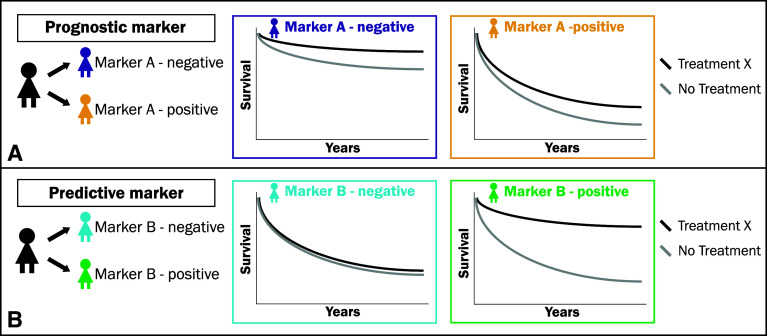Fig. 2.
a A prognostic marker predicts outcome of the natural history of a disease, regardless of treatment and therefore tells you whom to treat. (In this example: Marker A is a prognostic marker, as it predicts for a worse survival for Marker A-positive cases compared to Marker A-negative cases, irrespective of treatment. Consequently, Marker A-positive cases should be treated as these are more likely to die of disease. However, the marker does not tell how to treat). b A predictive marker predicts outcome in the presence of a specific therapy only but not in the absence of that specific treatment. It therefore tells you how (with what specific therapy) the patient should be treated (in this example: Marker B is a predictive marker, as it predicts an improved outcome to treatment X over no treatment in Marker B-positive cases, while no such benefit is seen in Marker B-negative cases; This difference in treatment effect between Marker B-positive and -negative cases should be significant on a test of interaction)

